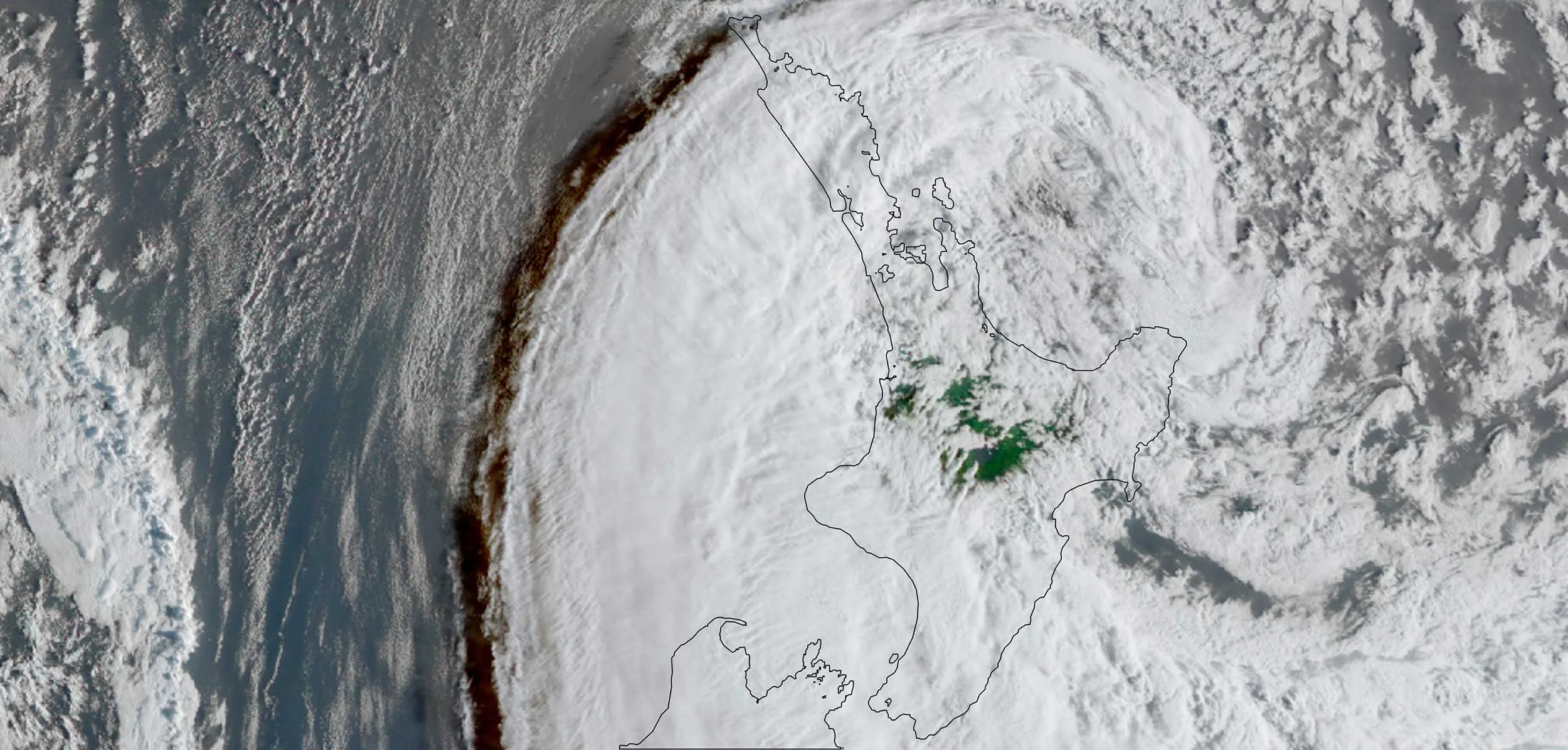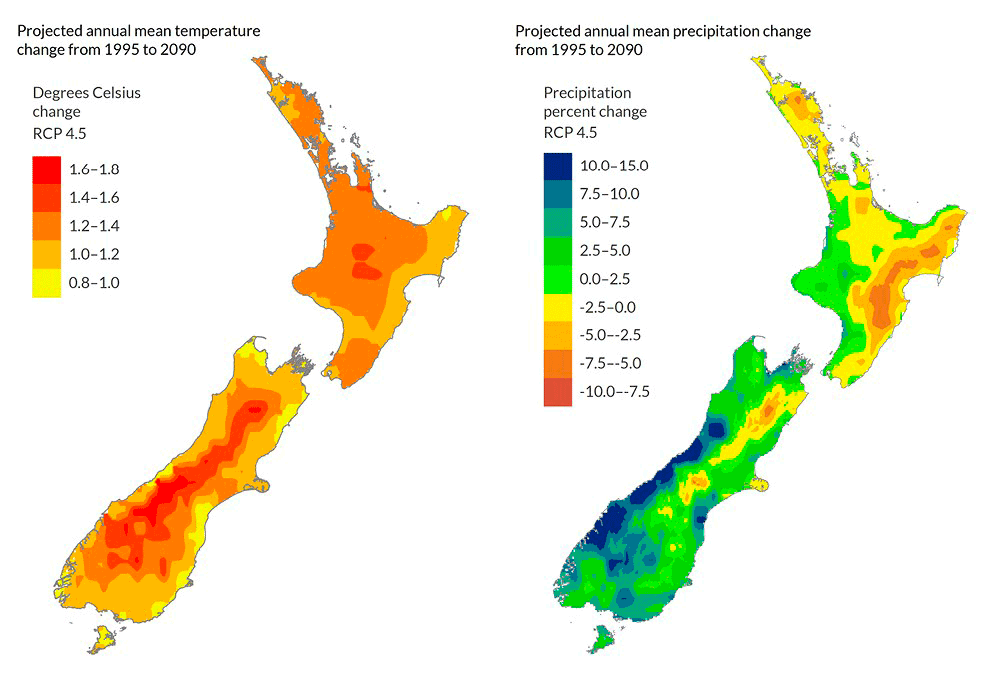
Cost to Society
Impacts on Society
New Zealand is projected to get hotter nation wide and dryer east of the main divide and in the far north
NZ Government climate projections by NIWA indicate a solid warming trend nation wide, and reduced rainfall east of the main divide and in the far north.
Flooding will intensify
In a warmer climate we have more water vapour in the air because of more evaporation off the oceans. This gives additional energy to storm systems that hit harder, do more damage, and cost more.
Droughts will get longer and hotter
A warming climate is a drying climate for many parts of the world including much of our farmlands. Our hill farmers are already suffering from low commodity prices, and the prospect of more intense droughts will hurt them even more.
The societal cost of ex-tropical cyclones is escalating
The cost of carbon pollution can be measured in the damage done by extreme weather events.
Cyclone Gabriel in 2023 cost around $4 billion and also added to inflation around the country.




